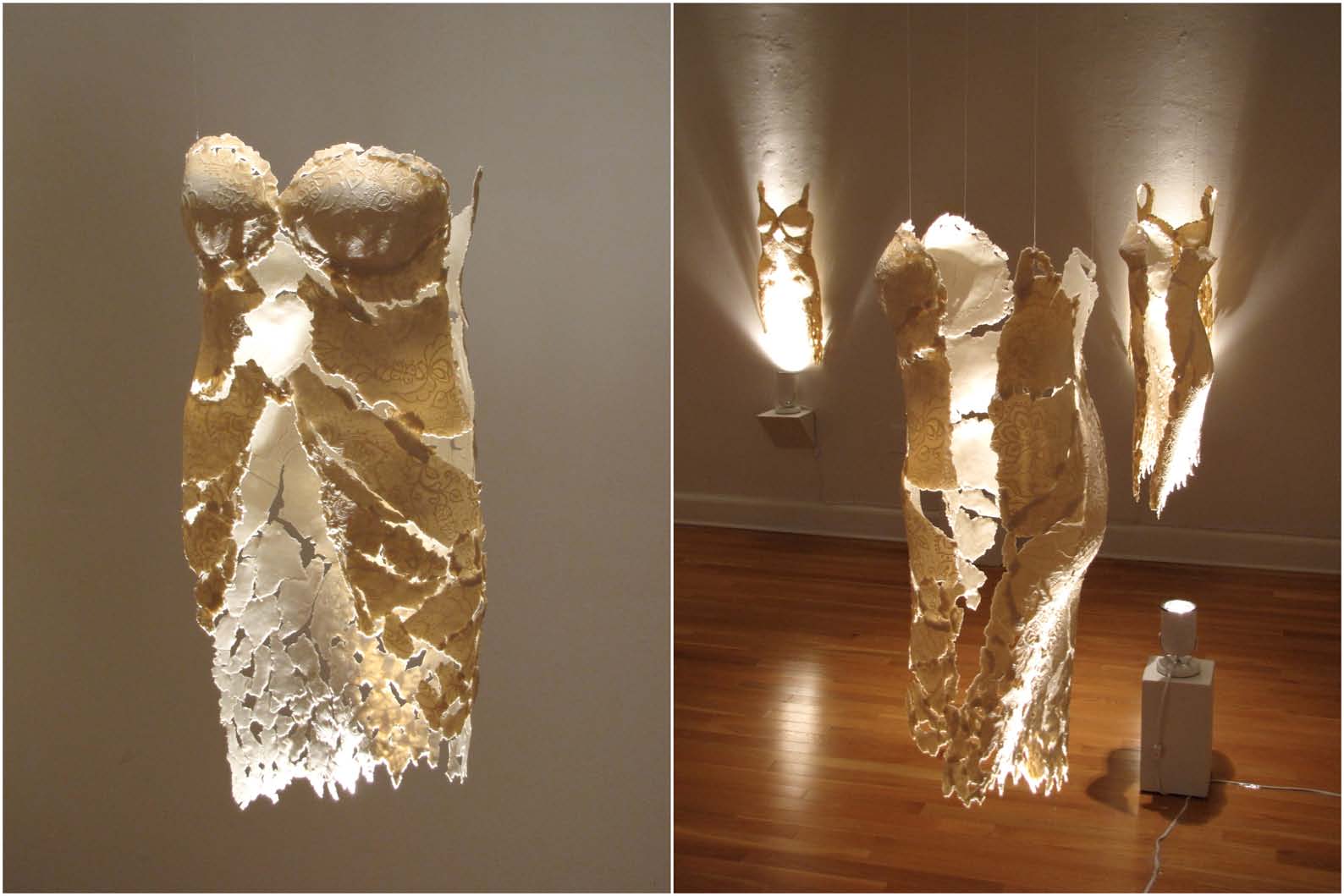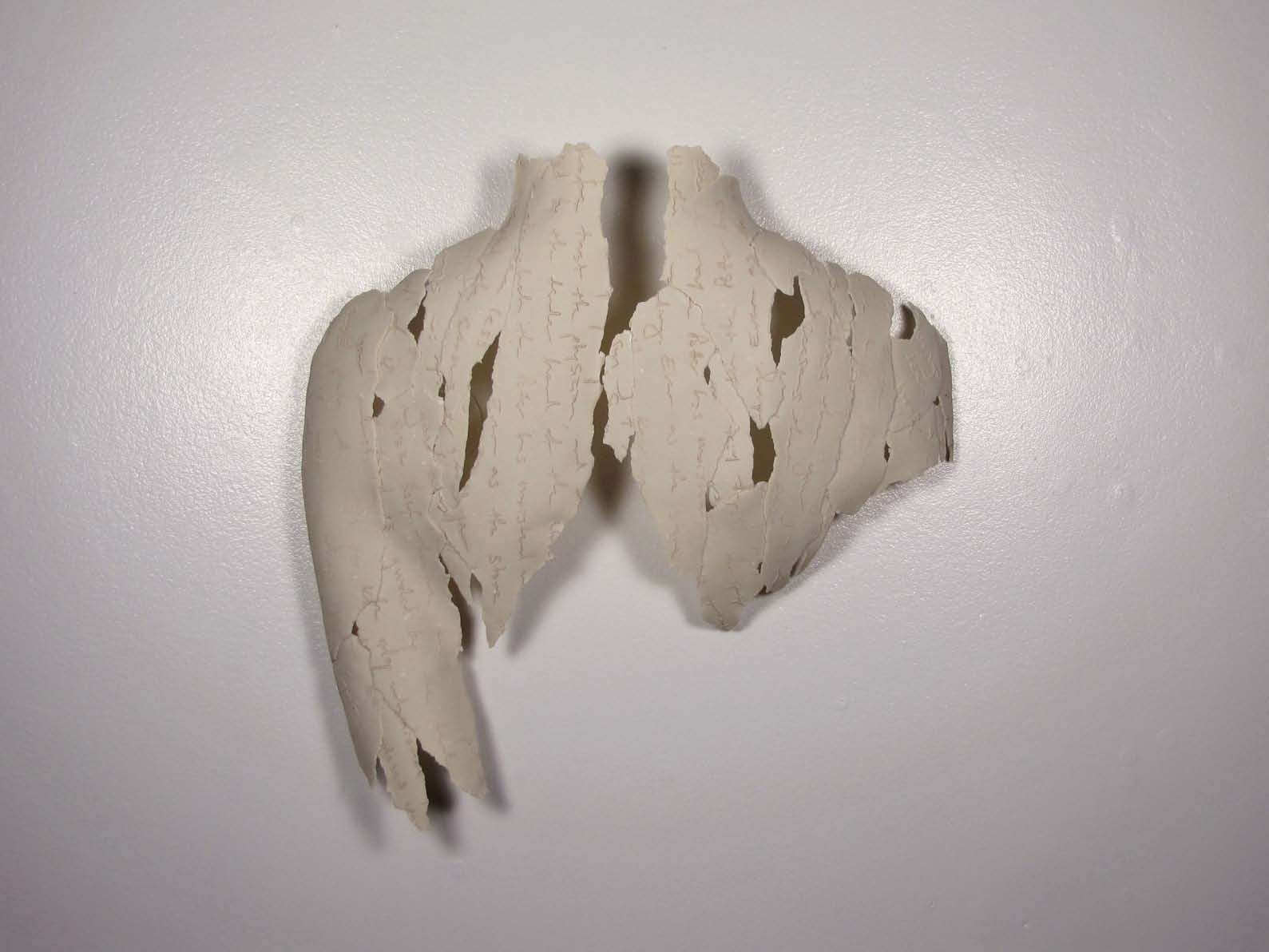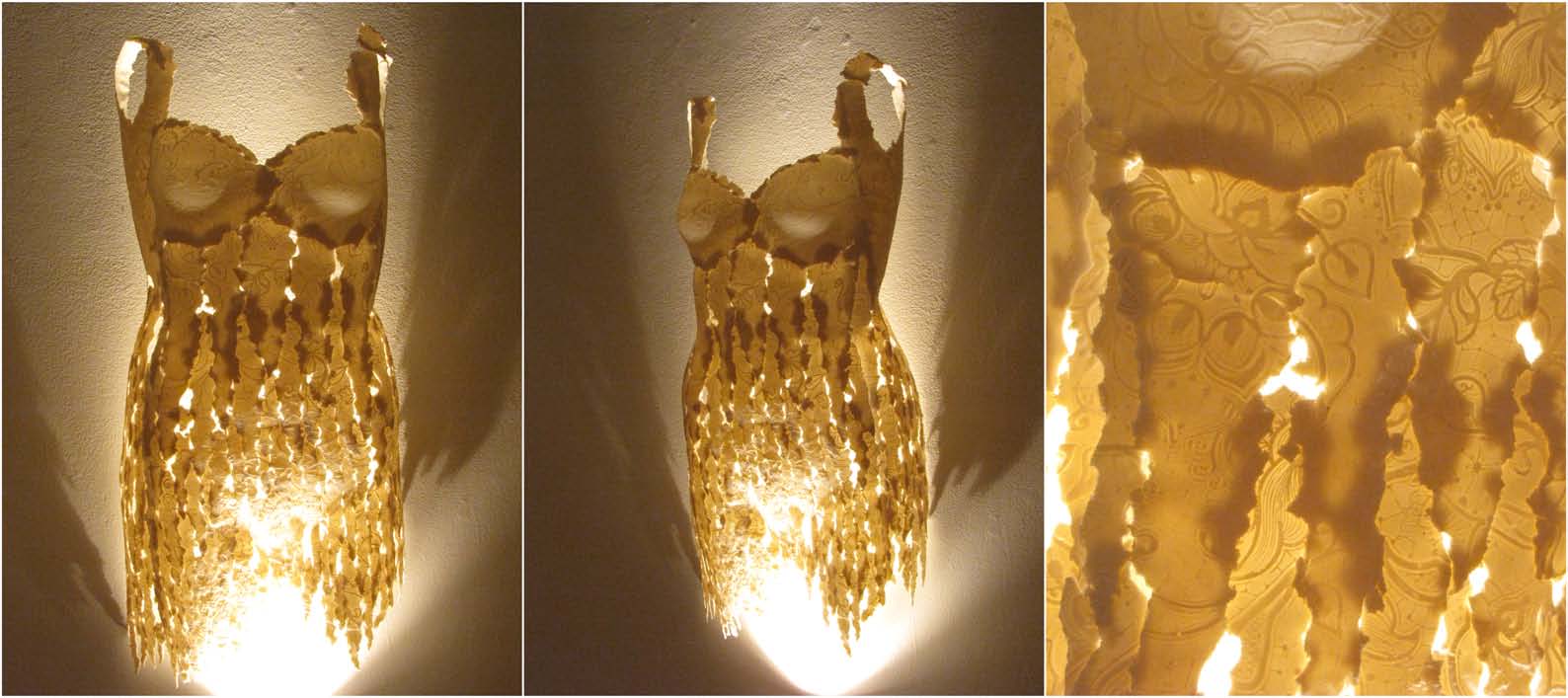Project Profile
Goals of the project
I’ve been using a laser cutter to engrave plywood boards with textile patterns and text. I use them with soft clay to create ceramic sculptures. The engraved wooden boards yield a raised texture when soft clay is pressed onto them. I’ve also used the laser cutter to cut acrylic wall mounting plates for the finished sculptures.
Nature of the Collaboration
Solo project
Skills
Adobe Illustrator: used to create the initial files for engraving
Ceramics skills: ability to use press-molded clay to build sculptures
Tools
Laser cutter, ceramics kiln
Process
I begin by creating a file in Adobe Illustrator of the engraving for a wood board or the shape I need to cut from acrylic. For the wood texture boards, the laser cutter engraves the pattern from my file into the board. I then bring it back to my studio and press very thin slabs of soft porcelain clay onto the board. The engraved design is then created in relief on the clay. I then use the clay slabs to build figurative sculptures inside of ceramic molds. The porcelain sculptures are fired in their molds in a ceramics kiln to about 2232 degrees F. The thin porcelain is translucent when fired, so the texture/pattern from the laser cut board is strongly visible when the sculpture is illuminated. I also use the laser cutter to create custom clear acrylic wall mounting plates for the finished sculptures. The plates fit over a screw head, and are designed to accept a 5/8” acrylic rod, which holds the sculpture off from the wall. The plates and rods must be clear so as not to interfere with the translucency of the porcelain material.
Milestones
Using the process detailed above, I’ve been able to create about figurative sculptures that are life-sized. The process of using the laser cutter to essentially create tools and parts used in my studio practice was significantly easier than figuring out how to work with extremely thin and delicate slabs of porcelain.
Challenges encountered
The main challenge with using the laser cutter was to simply discover the settings needed to create the proper depth in the engraved wood board. If the engraving was too shallow, the impression in the clay is somewhat flat and in low relief. If the engraving is too deep, the clay will become stuck in the recessed pattern and rip upon removal.
Major outcomes
To date, this project has yielded approximately ten full or partial figurative sculptures.
Innovations, impact and successes
The major innovation of this project are the techniques used to form and fire extremely thin porcelain in a non-industrial setting. The use of ceramic molds in which the sculptures can be fired allows the thin clay to hold the desire shape.
 Michelle Swafford
Michelle Swafford


